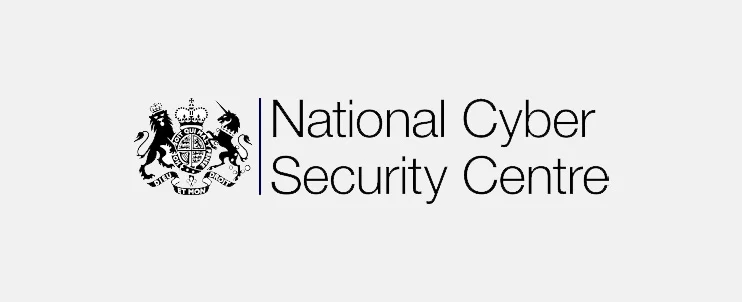![]()
The National Cyber Security Centre (NCSC) has developed the Cyber Assessment Framework (CAF) to help these organisations achieve and demonstrate an appropriate level of cyber resilience. This blog post delves into the intricacies of the CAF, its components, and its significance.
Introduction to the CAF
The Cyber Assessment Framework (CAF) is a comprehensive collection of cyber security guidance designed to assist organisations in managing cyber-related risks to essential functions. These functions are critical to the UK’s infrastructure and public services, and their disruption could have severe consequences. The CAF aims to provide a systematic approach to assessing and improving cyber resilience.
Who is the CAF For?
The CAF is intended for a wide range of organisations, including:
- Organisations subject to the Network and Information Systems (NIS) Regulations.
- Organisations within the UK Critical National Infrastructure (CNI).
- Public sector organisations that support core government functions.
- Other sectors that may find the CAF a useful tool for managing cyber-related risks.
Components of the CAF
The CAF is structured around four key objectives, each with specific principles and guidance:
- Managing Security Risk
- Protecting Against Cyber Attack
- Detecting Cyber Security Events
- Minimising the Impact of Cyber Security Incidents
Let’s explore each of these objectives in detail.
Managing Security Risk
Managing security risk is the foundation of the CAF. It involves identifying, assessing, and managing risks to the organisation’s essential functions. This objective is divided into several principles:
- Governance: Establishing a governance framework that ensures cyber security is managed effectively across the organisation.
- Risk Management: Implementing a risk management process that identifies and assesses risks, and applies appropriate controls to mitigate them.
- Asset Management: Maintaining an inventory of assets that are critical to the organisation’s essential functions and ensuring they are adequately protected.
Protecting Against Cyber Attack
This objective focuses on implementing measures to protect the organisation’s systems and data from cyber attacks. The principles under this objective include:
- Identity and Access Control: Ensuring that only authorised individuals have access to critical systems and data.
- Data Security: Protecting data from unauthorised access, modification, or deletion.
- System Security: Implementing security measures to protect systems from cyber threats.
- Resilience: Ensuring that systems and data can withstand and recover from cyber attacks.
Detecting Cyber Security Events
Detecting cyber security events is crucial for responding to and mitigating the impact of cyber incidents. This objective includes the following principles:
- Security Monitoring: Implementing monitoring systems to detect cyber security events in real-time.
- Anomaly Detection: Identifying unusual activity that may indicate a cyber security incident.
- Situational Awareness: Maintaining an understanding of the organisation’s cyber security posture and the threat landscape.
Minimising the Impact of Cyber Security Incidents
The final objective of the CAF focuses on minimising the impact of cyber security incidents through effective response and recovery measures. The principles under this objective include:
- Response and Recovery Planning: Developing and maintaining plans to respond to and recover from cyber security incidents.
- Incident Management: Implementing processes to manage and coordinate the response to cyber security incidents.
- Lessons Learned: Reviewing and analysing incidents to identify lessons learned and improve future response and recovery efforts.
Implementing the CAF
Implementing the CAF requires a structured approach that involves several steps:
- Assessment: Conducting an initial assessment to identify gaps in the organisation’s cyber security posture.
- Planning: Developing a plan to address identified gaps and improve cyber resilience.
- Implementation: Implementing the planned measures and controls.
- Monitoring and Review: Continuously monitoring the organisation’s cyber security posture and reviewing the effectiveness of implemented measures.
Benefits of the CAF
The CAF offers several benefits to organisations, including:
- Improved Cyber Resilience: By following the CAF, organisations can enhance their ability to withstand and recover from cyber incidents.
- Regulatory Compliance: The CAF helps organisations comply with relevant regulations, such as the NIS Regulations.
- Enhanced Reputation: Demonstrating a commitment to cyber security can enhance an organisation’s reputation and build trust with stakeholders.
- Risk Reduction: Implementing the CAF can help organisations identify and mitigate cyber-related risks, reducing the likelihood and impact of cyber incidents.
Challenges and Considerations
While the CAF provides a comprehensive framework for managing cyber security, organisations may face several challenges in its implementation:
- Resource Constraints: Implementing the CAF requires resources, including time, budget, and skilled personnel. Organisations may need to prioritise their efforts based on available resources.
- Complexity: The CAF covers a wide range of cyber security aspects, and organisations may find it challenging to address all principles simultaneously. A phased approach may be necessary.
- Change Management: Implementing the CAF may require changes to existing processes and systems. Effective change management is crucial to ensure a smooth transition.
Conclusion
The Cyber Assessment Framework (CAF) by the NCSC is a valuable tool for organisations seeking to enhance their cyber resilience. By following the CAF’s guidance, organisations can systematically assess and improve their cyber security posture, ensuring they are better prepared to manage cyber-related risks and respond to incidents. While implementing the CAF may present challenges, the benefits of improved cyber resilience, regulatory compliance, and risk reduction make it a worthwhile endeavour.
Organisations are encouraged to leverage the CAF to strengthen their cyber security measures and protect the essential functions that underpin the UK’s infrastructure and public services. By doing so, they can contribute to a more secure and resilient digital landscape.
